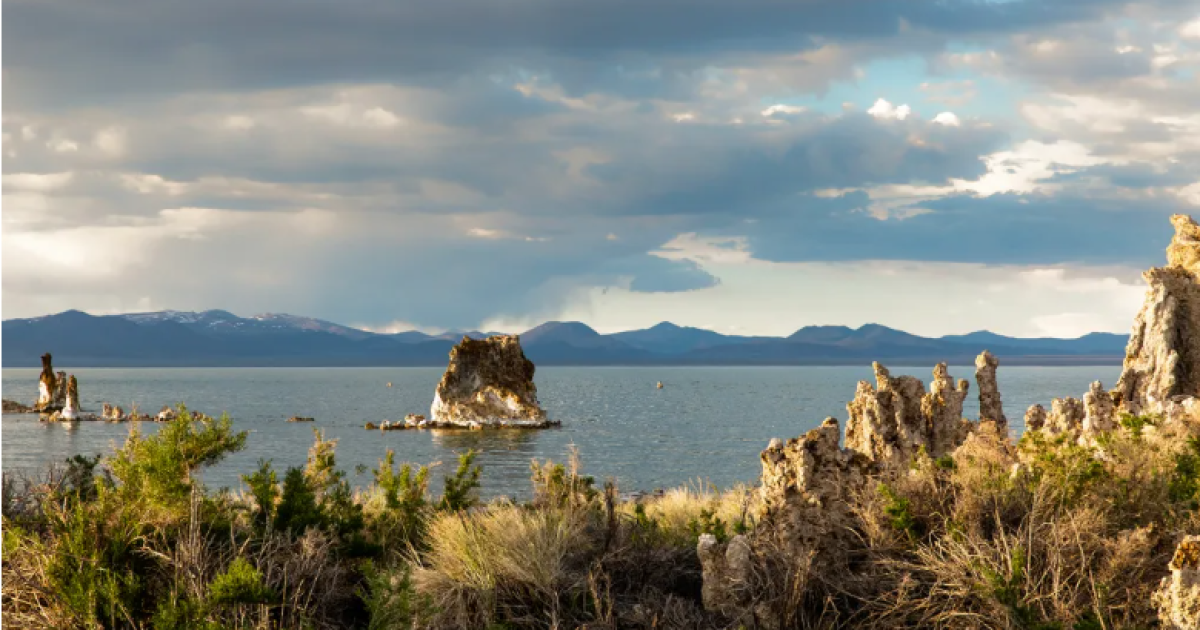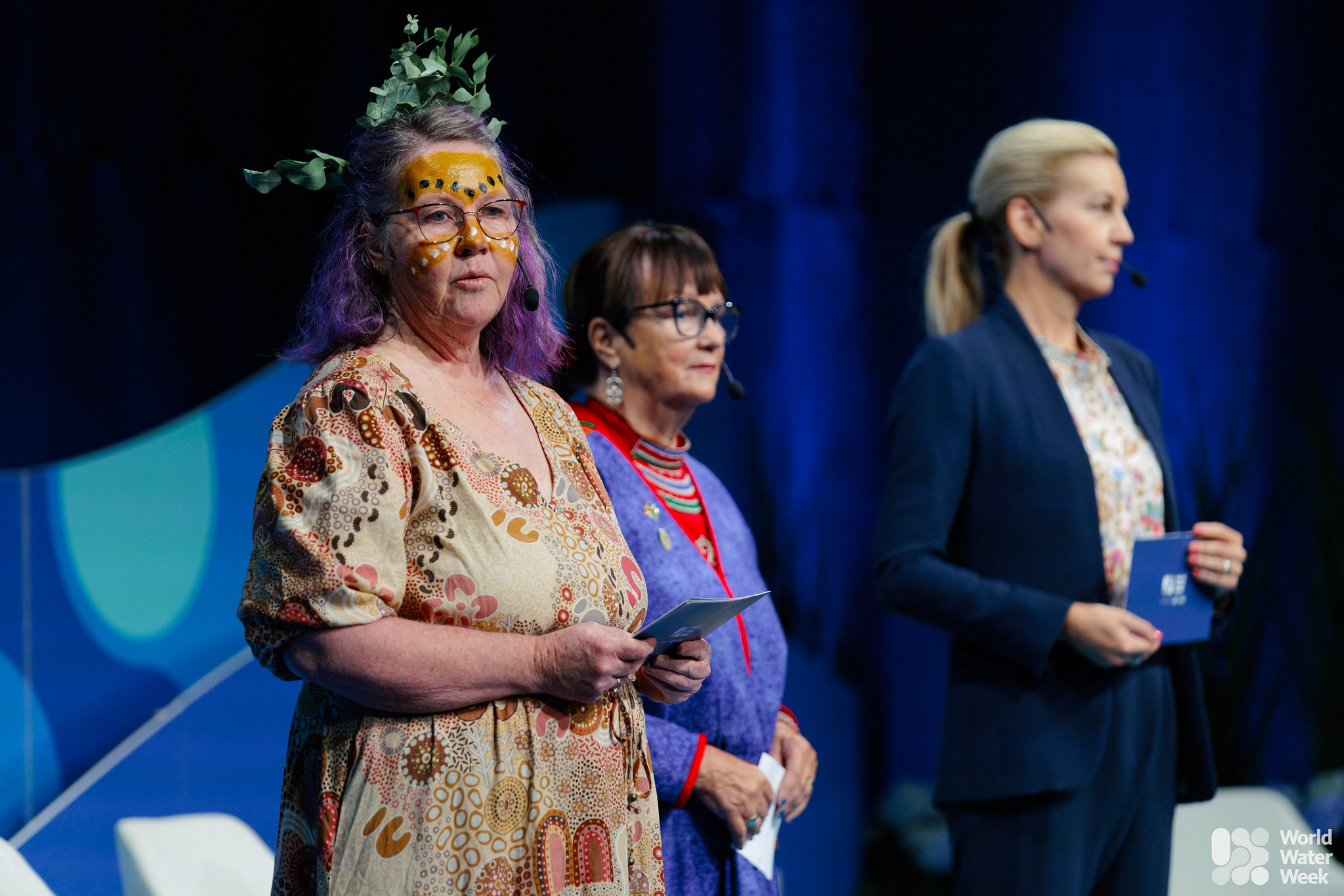Spokane County voters to decide on aquifer protection funding – NonStop Local KHQ

Report on the Proposed Renewal and Expansion of the Spokane Aquifer Protection Area
Introduction
A measure is under consideration by residents of Spokane County, Washington, regarding the renewal and expansion of the Aquifer Protection Area. This initiative is critical for the long-term protection of the Spokane Valley-Rathdrum Prairie Aquifer, which is the sole source of drinking water for the region. The proposal aims to secure funding for comprehensive water quality programs, pollution monitoring, and the analysis of water trends, directly aligning with global sustainability efforts.
Alignment with Sustainable Development Goals (SDGs)
The proposed measure fundamentally supports several United Nations Sustainable Development Goals (SDGs), ensuring the environmental health and resilience of the community.
SDG 6: Clean Water and Sanitation
This initiative is a direct implementation of SDG 6, which aims to ensure the availability and sustainable management of water and sanitation for all. Key actions include:
- Safeguarding the region’s only source of potable water from contamination.
- Implementing robust pollution monitoring systems to maintain water quality.
- Promoting the sustainable management of a vital water resource through informed conservation practices, such as summer watering restrictions tied to river levels.
SDG 11: Sustainable Cities and Communities
By protecting the foundational water supply, the measure enhances the sustainability and resilience of Spokane County, a core objective of SDG 11. It ensures that the urban and rural communities dependent on the aquifer can continue to thrive in a safe and healthy environment.
SDG 12: Responsible Consumption and Production
The initiative encourages responsible consumption of water resources. Furthermore, it highlights the need for responsible handling of chemicals and petroleum products by residents and industries to prevent groundwater contamination, which is a key target of SDG 12.
SDG 15: Life on Land
Protecting the aquifer from pollution also contributes to the health of terrestrial ecosystems that are hydrologically connected to it, thereby supporting the goals of SDG 15 to protect and restore life on land.
Key Components of the Proposed Measure
Objectives of the Initiative
If approved, the measure will provide the necessary financial framework to achieve the following:
- Renew and expand the existing Aquifer Protection Area.
- Secure stable funding for ongoing aquifer protection activities.
- Support regional water quality programs and pollution monitoring.
- Enable systematic tracking of water trends to inform future management decisions.
Financial Implications
The financial structure of the measure is designed to continue the existing funding model without an increase in the tax rate.
- The fee will remain at $1.25 per month per equivalent residential unit for water withdrawal.
- This translates to an annual fee of $15 for a single-family home in an urban area and $30 in a rural area.
The Spokane Valley-Rathdrum Prairie Aquifer: A Critical and Vulnerable Resource
Resource Characteristics
The aquifer is a unique and indispensable asset for the region.
- It is the sole source of drinking water for Spokane County and surrounding areas.
- The water levels within the aquifer fluctuate with the levels of the Spokane River.
- Its proximity to the surface makes it highly susceptible to contamination from surface activities, underscoring the importance of public awareness and protective measures.
Infrastructure and Operations
The region’s water infrastructure demonstrates a long history of resource management.
- Spokane’s first well was constructed in 1907 and now serves as an educational viewing site, revealing the clear water of the aquifer.
- A modern pump station at the site has the capacity to push 13,500 gallons of water per minute, powered by a 1,000-horsepower motor.
- In a unique example of integrated and sustainable energy use, the pumps are powered by a hydroelectric dam on the Spokane River.
Conclusion and Next Steps
The decision before Spokane voters in August represents a critical step in upholding the principles of sustainable development. By renewing the Aquifer Protection Area, the community can ensure the continued viability of its most essential natural resource, securing clean water for future generations and reinforcing its commitment to achieving the Sustainable Development Goals.
Analysis of SDGs, Targets, and Indicators
1. Which SDGs are addressed or connected to the issues highlighted in the article?
- SDG 6: Clean Water and Sanitation
- SDG 7: Affordable and Clean Energy
- SDG 11: Sustainable Cities and Communities
- SDG 12: Responsible Consumption and Production
- SDG 14: Life Below Water
2. What specific targets under those SDGs can be identified based on the article’s content?
SDG 6: Clean Water and Sanitation
- Target 6.1: By 2030, achieve universal and equitable access to safe and affordable drinking water for all.
- The article focuses on protecting the “Spokane Valley-Rathdrum Prairie Aquifer, the region’s sole source of drinking water.” The proposed measure, funded by a tax of “$1.25 per month,” aims to ensure this water source remains safe and available for all residents in Spokane County.
- Target 6.3: By 2030, improve water quality by reducing pollution, eliminating dumping and minimizing release of hazardous chemicals and materials…
- The proposal includes funding for “pollution monitoring” and highlights the importance of “careful handling of chemicals and petroleum products was highlighted to prevent contamination,” which directly addresses the goal of improving water quality by reducing pollution.
- Target 6.4: By 2030, substantially increase water-use efficiency across all sectors and ensure sustainable withdrawals and supply of freshwater to address water scarcity…
- The article mentions that “watering restrictions in the summer when river levels are low” are implemented. This is a direct measure to manage water use efficiently and ensure sustainable withdrawals during periods of lower water availability.
- Target 6.5: By 2030, implement integrated water resources management at all levels…
- The proposal to “renew and expand the Aquifer Protection Area” is a clear example of a community-level policy for integrated water resources management, involving funding, protection, and monitoring for a shared water source.
- Target 6.6: By 2020, protect and restore water-related ecosystems, including… aquifers…
- The entire article is centered on the protection of the Spokane Valley-Rathdrum Prairie Aquifer. The measure is explicitly designed to “ensure protection of the… Aquifer.”
SDG 7: Affordable and Clean Energy
- Target 7.2: By 2030, increase substantially the share of renewable energy in the global energy mix.
- The article states, “Uniquely, a dam on the Spokane River powers these pumps, ensuring efficient water delivery.” This indicates the use of hydropower, a form of renewable energy, to power the water infrastructure.
SDG 11: Sustainable Cities and Communities
- Target 11.6: By 2030, reduce the adverse per capita environmental impact of cities…
- The initiative to protect the aquifer from contamination by “chemicals and petroleum products” is a direct action to reduce the adverse environmental impact of the urban and rural areas within Spokane County.
SDG 12: Responsible Consumption and Production
- Target 12.2: By 2030, achieve the sustainable management and efficient use of natural resources.
- The implementation of “watering restrictions in the summer” is a policy aimed at managing the consumption of a key natural resource (water) sustainably, especially when it is scarce.
SDG 14: Life Below Water
- Target 14.1: By 2025, prevent and significantly reduce marine pollution of all kinds, in particular from land-based activities…
- By preventing “chemicals and petroleum products” from contaminating the aquifer, which is connected to the Spokane River (“Aquifer levels change with the rivers”), the measure helps reduce pollution from land-based activities that could eventually flow to larger bodies of water.
3. Are there any indicators mentioned or implied in the article that can be used to measure progress towards the identified targets?
Indicators for SDG 6
- Indicator 6.3.2: Proportion of bodies of water with good ambient water quality.
- The article mentions “pollution monitoring” and “tracking water trends.” The description of the water as “crystal-clear blue” serves as a qualitative baseline. Progress would be measured by monitoring data that confirms the absence or reduction of contaminants.
- Indicator 6.4.2: Level of water stress: freshwater withdrawal as a proportion of available freshwater resources.
- This is implied by the mention of “watering restrictions in the summer when river levels are low.” The need for restrictions indicates a high level of water stress. The volume of water pumped (“13,500 gallons of water per minute”) is a measure of withdrawal.
- Indicator 6.5.1: Degree of integrated water resources management implementation.
- The vote to “renew and expand the Aquifer Protection Area” is a direct measure of progress. If approved, it represents the implementation of an integrated management plan for the aquifer.
- Indicator 6.6.1: Change in the extent of water-related ecosystems over time.
- The article notes that “Aquifer levels change with the rivers.” Tracking these aquifer levels over time is a direct way to measure the health and extent of this specific water-related ecosystem.
Indicators for SDG 7
- Indicator 7.2.1: Renewable energy share in the total final energy consumption.
- The fact that a “dam on the Spokane River powers these pumps” provides a specific instance of renewable energy use. The indicator would be the proportion of energy used for water pumping that comes from this hydropower source.
Indicators for SDG 12
- Indicator 12.2.1: Material footprint, material footprint per capita, and material footprint per GDP.
- The tax based on “withdrawal of water” and the pump capacity of “13,500 gallons of water per minute” are measures of water consumption. Tracking these figures per capita would serve as an indicator for the consumption of this natural resource.
4. Table of SDGs, Targets, and Indicators
| SDGs | Targets | Indicators |
|---|---|---|
| SDG 6: Clean Water and Sanitation |
6.1: Achieve universal and equitable access to safe and affordable drinking water.
6.3: Improve water quality by reducing pollution. 6.4: Increase water-use efficiency and ensure sustainable withdrawals. 6.5: Implement integrated water resources management. 6.6: Protect and restore water-related ecosystems (aquifers). |
Tax of “$1.25 per month” as a measure of affordability.
Data from “pollution monitoring” and “tracking water trends.” Implementation of “watering restrictions” and tracking withdrawal volumes (e.g., “13,500 gallons of water per minute”). The approval and implementation of the “Aquifer Protection Area” renewal. Monitoring of “Aquifer levels.” |
| SDG 7: Affordable and Clean Energy | 7.2: Increase the share of renewable energy. | Use of hydropower from a “dam on the Spokane River” to power water pumps. |
| SDG 11: Sustainable Cities and Communities | 11.6: Reduce the adverse per capita environmental impact of cities. | Actions to prevent contamination from “chemicals and petroleum products.” |
| SDG 12: Responsible Consumption and Production | 12.2: Achieve the sustainable management and efficient use of natural resources. | Implementation of “watering restrictions in the summer” to manage water consumption. |
| SDG 14: Life Below Water | 14.1: Prevent and reduce marine pollution from land-based activities. | Efforts to prevent pollution of the aquifer (connected to the river) from land-based “chemicals and petroleum products.” |
Source: khq.com

What is Your Reaction?
 Like
0
Like
0
 Dislike
0
Dislike
0
 Love
0
Love
0
 Funny
0
Funny
0
 Angry
0
Angry
0
 Sad
0
Sad
0
 Wow
0
Wow
0
























;Resize=805#)






















































